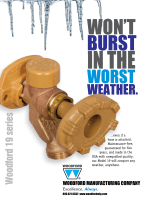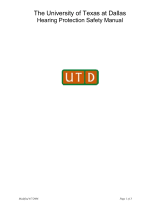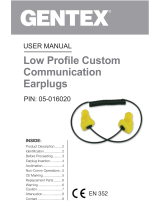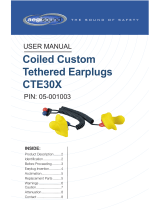3M Hearing Protection DL DPR Operating instructions
- Type
- Operating instructions
3M Hearing Protection DL DPR: These earplugs provide 32 NRR protection, making them ideal for noisy environments like concerts or construction sites. Their soft, pliable material ensures a comfortable fit, and their contoured T-shape design helps keep them in place. Plus, they're reusable and washable, so you can use them again and again.
3M Hearing Protection DL DPR: These earplugs provide 32 NRR protection, making them ideal for noisy environments like concerts or construction sites. Their soft, pliable material ensures a comfortable fit, and their contoured T-shape design helps keep them in place. Plus, they're reusable and washable, so you can use them again and again.









-
 1
1
-
 2
2
-
 3
3
-
 4
4
-
 5
5
-
 6
6
-
 7
7
-
 8
8
-
 9
9
3M Hearing Protection DL DPR Operating instructions
- Type
- Operating instructions
3M Hearing Protection DL DPR: These earplugs provide 32 NRR protection, making them ideal for noisy environments like concerts or construction sites. Their soft, pliable material ensures a comfortable fit, and their contoured T-shape design helps keep them in place. Plus, they're reusable and washable, so you can use them again and again.
Ask a question and I''ll find the answer in the document
Finding information in a document is now easier with AI
Related papers
-
3M Hearing Protection DL DPR Operating instructions
-
3M Hearing Protection DL DPR Operating instructions
-
3M Hearing Protection DL DPR Operating instructions
-
3M 10004 User manual
-
3M Hearing Protection DL DPR Operating instructions
-
3M Hearing Protection DL DPR Operating instructions
-
3M Detection Solutions DL DPR Operating instructions
-
3M Hearing Protection DL DPR Operating instructions
-
3M B00DHVXBEQ Datasheet
-
3M Hearing Protection DL DPR Operating instructions
Other documents
-
Etymotic Research ER20XS-SMF-P Operating instructions
-
 Woodford 19CP-6 Specification
Woodford 19CP-6 Specification
-
Honeywell Disposable Reusable Operating instructions
-
Etymotic Research ER20XS-SMF-P Installation guide
-
 Mutt Muffs DDR337 User manual
Mutt Muffs DDR337 User manual
-
Stalwart M550096 User manual
-
 Gentex 05-016020 User manual
Gentex 05-016020 User manual
-
Etymotic Research ER-20 User manual
-
 Aegisound 05-001003 User manual
Aegisound 05-001003 User manual
-
Etymotic Research ER-25 Quick Reference Manual












